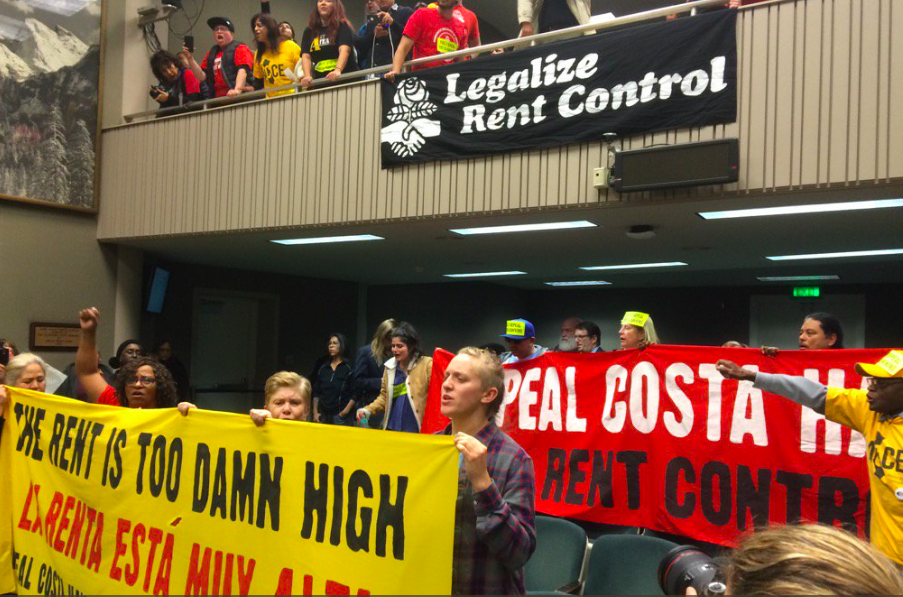The Yerba Buena Neighborhood Consortium, a subsidiary of TODCO, filed suit Nov. 22 to block the implementation of Plan Bay Area 2050, a sweeping proposal that could lead to the displacement of tens of thousands of low-income and working-class people.
The suit seeks a writ of mandamus to halt the plan, which outlines massive changes in the region’s land use.

The petition takes on the much larger issue that the two agencies responsible for Plan Bay Area largely ignore: The reality that vast amounts of new market-rate housing in cities like San Francisco will lead to widespread gentrification and displacement.
As the petition, written by environmental Lawyer Susan Brandt-Hawley, argues:
Despite lofty stated goals, PBA2050 as analyzed in the program EIR and approved by the Metropolitan Transportation Commission and Association of Bay Area Governments could propel the disappearance of lower-income/working class/minority BIPOC Central City communities and the market-driven displacement of hundreds of thousands of long-time residents.
“PBA2050 is stuck in 1981, and relies on a wildly outdated form of magical thinking called trickle-down economics to justify its endorsement of for-profit private sector development,” said Bobbi Lopez, policy director for Build Affordable Faster California. “ABAG and MTA have clearly turned a blind eye to the real estate developers who have spent decades gentrifying our neighborhoods, forcing working families out of their homes, and replacing them with fancy condominiums that only the very rich can afford.”
The petition uses the California Environmental Quality Act and argues that the environmental review of the plan fails to adequately address the chief crises facing the region: homelessness, housing, and protecting the frontline communities of color most at risk of climate change-related displacement:
“Concerns received on the project and EIR included those from housing and equity advocates and local jurisdictions regarding the need to prioritize support of anti-displacement efforts.”
More: The EIR includes
pages of findings that PBA 2050 would result in significant adverse environmental impacts to, inter alia, scenic vistas; state scenic highways; air quality due to substantial net increase in construction-related emissions; expose sensitive receptors to substantial pollutant concentrations; species identified as candidate, sensitive, or special status; designated critical habitat for federally listed plant and wildlife species; substantial interference with the movement of any native resident or migratory fish or wildlife species or with established native resident or migratory wildlife corridor, or impede the use of native wildlife nursery sites; substantially effect riparian habitat or state or federally protected wetlands; significance of historical resources; substantial adverse change in the significance of unique archaeological resources; net increase in greenhouse gas emissions that may have a significant impact on the environment; conflict with an applicable state plan, policy or regulation adopted for the purpose of reducing the emissions of greenhouse gases; zoning conflicts relating to public views; conversion of prime farmland and timberland; air quality; transportation; insufficient water supplies; insufficient wastewater facilities; relocation or construction of new or expanded water, wastewater treatment or storm water drainage, electric power, natural gas, or telecommunications facilities; substantial adverse physical impacts associated with the need for new or physically altered governmental facilities, the construction of which could cause significant environmental impacts, to maintain acceptable service ratios, response times, or other performance objectivesfor fire protection, police protection, schools, parks, and other public facilities; groundborne vibration and noise exceeding codified limits; impair emergency evacuation plan; impacts to hazardous materials sites; directly or indirectly destroy a unique paleontological resource or site or unique geologic feature; and substantial adverse changes in the significance of a unique archaeological resource.
But:
At a joint meeting on October 21, 2021 the Executive Boards of MTC and ABAG certified the PBA2050 EIR with a Statement of Overriding Considerations that the Plan’s numerous significant environmental impacts are outweighed by its benefits.
The petition demands that the plan be amended to include concrete efforts to address the housing needs of the workforce and to prevent the displacement of vulnerable communities. It also argues that the plan must include
A 100% jobs/affordable housing balance for all large-scale future commercial development in all Bay Area counties. San Francisco’s 2020 Proposition E was the first step towards this goal in the region. It must be mandated throughout the Bay Area, starting with the upcoming Oakland Downtown Plan, and expanded to include the now booming development of biomed facilities region-wide too.
In other words: If cities and counties want to allow more office growth the attracts new high-paid workers, they have to guarantee that housing for both the existing and new workforce is in place first.
If this succeeds, it will not only upend Plan Bay Area 2050 but set the groundwork for regional anti-displacement rules that could transform development patterns for decades.
We will keep you posted when a hearing is set.




